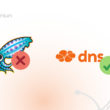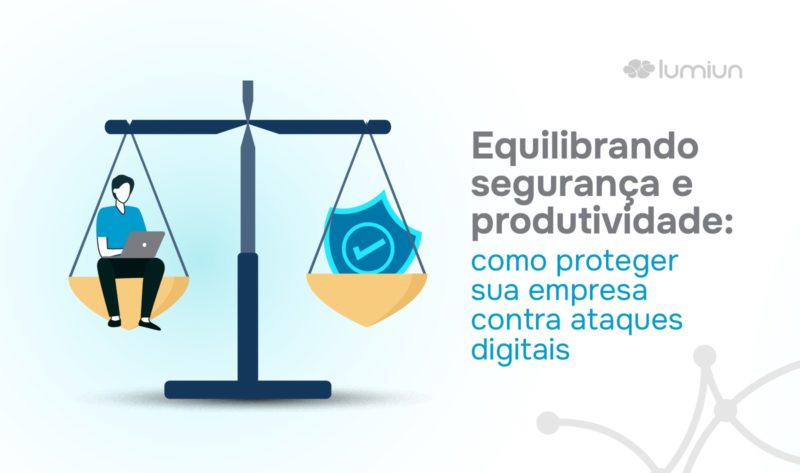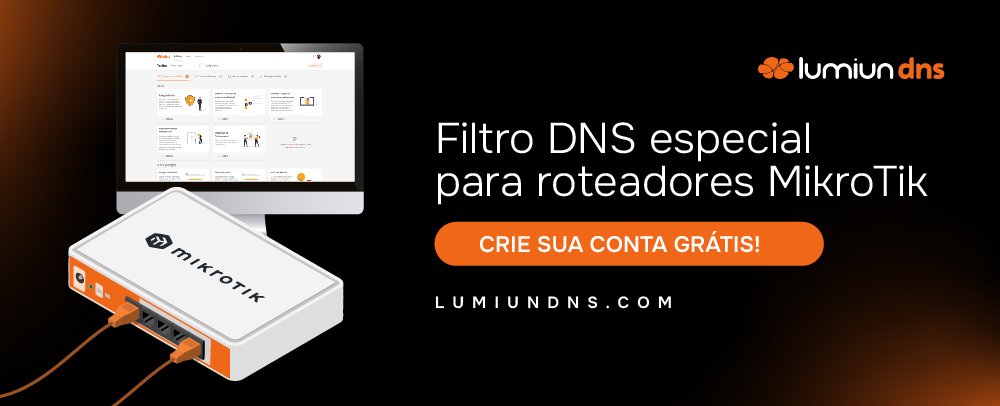Digital security is critical to companies today. With increasing digitization, organizations are more vulnerable to cyber attacks. Thus, finding the balance between safety and productivity is essential to ensure business continuity.
Digitization brought many benefits, but also increased the risks. Companies need to be prepared to face these threats and protect their data and systems. Thus, by investing in digital security, companies can avoid financial losses and protect their reputation.
In addition, cyber threats constantly evolve, making the current scenario complex and challenging. Cybercriminals employ sophisticated tactics such as phishing attacks to access data and interrupt operations. The lack of a robust security strategy exposes organizations to considerable risks. According to a DMARC Report report, in 2023 phishing attacks grew 58.2% compared to the previous year, mainly affecting sectors such as finance and insurance.
According to the Thales Data Threat Report 2024 , ransomware attacks increased 27% over the previous year . This happened mainly because most companies are still unprepared to deal with this kind of threat.
In this sense, cyber attacks cause significant damage to companies. In addition to causing financial losses, data violation shakes the trust of customers and partners. Interruption of operations impacts productivity and delivery of products and services. Protecting yourself against digital threats is important to preserve reputation and ensure business success.
How to protect your company against digital threats
Company protection against digital threats begins with the implementation of a robust and planned cyber security strategy . This includes the use of firewalls to block unauthorized access and monitoring systems to identify real -time invasion attempts. content filtering solutions are indispensable to prevent employees from accessing malicious or inappropriate websites that compromise the network.
In addition, multifactorial authentication and password management are other essential measures to protect stored confidential information. Several violations happen due to the use of weak or reused passwords, and it is necessary to adopt a strong authentication system that uses multiple verification factors. In this way, companies can significantly reduce the risk of unauthorized access to their systems.
Thus, employee training is critical to digital security. In addition, investments in regular training helps the team identify threats such as phishing , fraudulent emails and other traps found in the online environment. That is, the security of the company depends on both technology and employee awareness.
The main threats that companies face
Among the most common threats faced by companies and organizations are phishing attacks, which deceive users to provide sensitive information or click on malicious links. By 2023, approximately 70% of all attempted cyber attack were reported as phishing, according to Verizon Data Breach Investigations . These attacks are particularly dangerous as they exploit the distraction and confidence of employees.
Thus, cybercriminals usually use sophisticated tactics, such as emails that seem to be reliable sources , to deceive even the most cautious users. In addition, the pandemic increased the prevalence of remote work, which also contributed to the increase of these attacks .
In this sense, malware attacks install malicious software in the company's systems to steal data or even take control of digital infrastructure. Downloads not checked or visited to committed websites can start this type of attack. According to the CyberSecurity & Infrastructure Security Agency (Cisa), in 2023 , ransomware, a specific form of malware, became one of the most prevalent threats, with a 150% increase compared to the previous year.
Denial Attacks (DDOS) aim to overload the company's servers, making their services inaccessible. According to Radware , there was a 30% increase in DDOS attacks by 2023, with cybercriminals using more sophisticated methods to maximize impact. These attacks can cause major financial losses as they can completely stop a company's operation.
In addition, the growing sophistication and frequency of these attacks highlight the urgent need for robust cyber security strategies in companies, including employee training, implementation of intrusive detection systems, and the adoption of good digital safety practices.
Ransomware
Ransomware is one of the most devastating threats of today, as criminals kidnap important data and require redemption payment for release . That is, this type of attack puts companies in great danger, becoming hostages of criminals. In many cases, the payment of the rescue does not guarantee complete recovery of the data.
Also, when ransomware affects a network, it encrypts all files , making them inaccessible until the amount is paid. In this sense, this can paralyze operations and make the company lose a lot of money while the attack lasts.
Prevention against this approach involves a number of measures such as maintaining regular backups , ensuring that systems are updated and use effective firewalls to block possible entry points.
A PWC Global Digital Trust Insights 2024 showed a financial impact data violations 1 million . In this sense, there was an increase from 27% to 36% in just one year . It is important to highlight the impact of new technologies in these changes, such as the use of general artificial intelligence , which is a potential threat to facilitating attacks .
The report stressed that companies that adopt consistent cybersecurity are less likely to suffer great financial losses due to cyber attacks, showing the importance of adopting more robust and efficient solutions to protect the organization's networks and devices.
Malicious websites
S Malicious items infect devices and opens doors for invaders, putting companies at risk. By accessing a compromised site with viruses or malware that can infect systems, stealing sensitive data such as financial and personal information. The biggest problem with malicious sites is that many of them appear as legitimate pages at first glance. They are often disguised as login pages or common services, deceiving users to provide their credentials. That done, criminals are able to access internal systems and explore the network's vulnerabilities.
Thus, the best way to avoid access to malicious sites is to use content filtering solutions . These solutions automatically block suspicious sites, protecting the network. That is, the most advanced tools can identify and block sites with suspicious behaviors , preventing employees from accessing content that can compromise network security.
The importance of blocking improper sites
Blocking access to improper websites is an important measure to ensure safety and productivity within companies. Sites that offer improper content, which are unrelated to the work environment, such as social networks and entertainment , have a risk of distraction for employees and, in some cases, even create vulnerabilities for cyber attacks .
Allowing unrestricted access to inadequate websites results in drop in productivity and increased digital risk. Blocking solutions, such as those offered by Lumun, help minimize these problems by keeping employees focused on their activities. Blocking improper content not only protects against digital threats, but it also creates a more productive work environment, preventing social networks and entertainment from distracting employees from their essential tasks.
Blocking of improper content increases productivity and prevents accidental access and hazardous sites with malware or phishing . By implementing a rigorous access control policy, the company maintains its networks secure and protects confidential data. Well -defined access policies guarantee a safe and productive work environment. Blocking categories such as social networks, games and adult content, which avoids distractions and protects against online threats.
Access control policy allows you to customize internet access to different groups of employees, such as releasing social networks for marketing and imposing restrictions on other sectors. Lumiun filtering tools facilitate this personalization. Therefore, it is important to review and update these policies regularly, as new digital threats require adjustments to the rules. By tracking trends and adapting guidelines, companies ensure that their employees avoid risks to information security.
Which digital safety tools your company needs to implement
There are several digital security tools that companies can implement to protect themselves against cyber attacks . Firewall solutions , for example, are fundamental to block unauthorized access to the corporate network. Content filtering tools , help prevent employees from accessing hazardous or improper sites, ensuring safer and more productive .
Automatic hazardous sites blocking systems are essential for digital safety. These tools use constantly up -to -date lists of malicious websites, preventing their employees from accessing malware infected pages or trying to steal confidential data. In a scenario of constantly evolving cyber threats, this protection becomes even more important.
In addition to technological tools, companies must implement clearer policies for network access and use. Personalized Files , such as those mentioned in the definitive guide to block sites , can be adjusted according to the specific needs of each organization, allowing the most effective control over who accesses what and when.
Firewall and content filtering solutions
Firewall solutions and content filtering are fundamental components to ensure the safety of corporate networks. Firewall acts as a barrier between the company's internal network and external threats, blocking unauthorized attempts and controlling network traffic . Through a well -configured firewall, organizations can prevent criminal sabotagers from accessing their systems.
Content filtering on the other hand, protects the company by monitoring and blocking access to potentially dangerous or improper sites and content. This is particularly important to prevent employees from accessing sites that contain phishing , automatically blocking and reducing the risk of cyber attacks.
By combining these two solutions, it is possible to create a robust safety layer that protects the network against a wide range of threats. Using firewalls and content filtering solutions is also a very effective way to maintain the productivity of your employees by locking access to websites that can distract or compromise network security.
Automatic blockage of hazardous and inappropriate sites
blockage of hazardous and inappropriate sites is an effective barrier against cyber attacks. This tool uses updated lists of malicious websites to prevent access to pages that can infect your devices with viruses or steal your data. By automatically blocking these threats, you ensure your business security and protecting confidential information. These solutions are very useful for preventing accidental malware download or phishing exposure. Malicious websites often disguise it as reliable portals, leading employees to become victims of fraud or have their devices infected with harmful files. The implementation of an automatic locking solution not only protects users, but also maintains the network free from threats, preventing the spread of IT infrastructure infections.
Implementing an automatic lock system is critical to ensuring that companies are protected against new threats . In addition, control of access to inappropriate websites, such as entertainment pages or adult content, makes the company be able to ensure that employees are using the internet responsibly .
Personalized filters to control networking
Custom filters are an advanced solution to control internet access within companies. By allowing managers to define rules for access to websites and categories, filters meet the specific needs of each sector.
With custom filters, companies can ensure that each employee has the appropriate access level for their activities, increasing security and avoiding distractions. These filters also allow the restriction of access to specific hours , creating a flexible policy adaptable to the needs of the organization.
As discussed in the definitive guide to block websites , custom filters offer a practical and effective solution to the management of internet use. They ensure that the company can protect itself against dangerous sites, but also maintain the productive .
How to improve employee productivity through monitoring
Monitoring the use of the internet in the workplace is a powerful tool to increase the productivity of its employees. Monitoring the sites accessed in office hours, the company identifies standards that affect performance, adjusts the access policy and ensures focus on important tasks.
One of the most effective ways to improve productivity within the workplace is by blocking access to entertainment sites and social networks . These platforms, although they may be useful in certain contexts, can represent a great distraction when used without control. Limiting access to these websites allows the company to promote a more productive .
Monitoring also allows managers to identify areas where employees may need additional support , either through training or work tool adjustments. Conscious use of monitoring tools can positively impact your team's performance without breaking the privacy of your employees.
Blocking entertainment sites and social networks during office hours
Blocking entertainment sites and social networks during working hours is one of the most direct ways to improve productivity. With unrestricted access, employees can waste time on work -related activities, affecting the quality and results of tasks. Blocking these pages helps keep focus on what really matters.
Unrestricted access to these platforms can overload network infrastructure, reducing connection speed and making it difficult to access critical systems. the use of these platforms for resting or after working hours allows the company to ensure a suitable bandwidth for productive purposes, optimizing the performance of all sectors.
Blocking social networks and entertainment sites also contributes to a more disciplined work culture . Employees learn to better manage their time and use the internet as a work tool, not as a source of distraction.
How controlled access impacts productivity
Controlled internet access has a direct impact on employee productivity. When the use of the network is regulated, by blocking inappropriate or distractive websites, employees tend to focus more on their responsibilities, increasing the efficiency and quality of work . This practice helps to avoid procrastination and dispersion, which are common behaviors when there is restricted access to work -related content.
In addition to considerably improving productivity, controlled access also contributes to the security of the company . By preventing employees from accessing hazardous or compromising sites, the organization reduces the risk of cyber attacks and malware infections.
Thus, access control is not only a tool for improving overall performance, but it is also a cyber protection . By implementing clear internet access control policies , companies can create a more efficient and disciplined work environment. Controlled access is one of the most effective ways to ensure that employees use time productively without giving up security.
Tools that allow the lock in one click
Tools that allow for the blocking of inadequate websites and content with one click are essential for efficient security management and increased productivity in companies. With the help of these solutions, IT managers can quickly prevent access to inappropriate or dangerous websites without the need for complex settings, speeding up the response to possible threats and facilitating control of internet use.
These tools are very useful in dynamic environments , where access to certain sites may need rapid adjustments, such as marketing campaigns or changes in IT policy. This type of lock also allows companies to adopt a proactive approach , identifying and blocking suspicious sites before they represent a real risk.
Security culture and productivity
By creating an environment where safety is a priority , the company can balance protection and productivity, developing an digital security culture . Implementing a digital security culture involves employees awareness of risks and also the importance of following established security policies.
By promoting transparency about security measures, companies create a mutual trust environment. When employees understand the reasons behind security policies, they feel more motivated to follow them. This proactive approach strengthens the security culture, as employees come to see company data protection as a shared responsibility. It is important to remember that the security culture must be embedded at all levels of the organization , from directors to interns. And that everyone is aware of digital security practices and the importance of following these policies.
As we have already discussed in Lumiun's productivity guide , this integrated approach will bring not only protection for the company, but also promote a more productive and collaborative environment. Thus, all employees involved in the company's dynamics will be focused on keeping the network protected and ensuring better and better results.
Avoiding over control and surveillance in the workplace
While monitoring and access control are essential tools to ensure digital safety, it is important that the company avoids over control and surveillance in the workplace. A very rigid and invasive approach can have distrust in employees, affecting morals and having a great impact on productivity.
In addition, this type of intervention can also create an oppressive work environment, where employees feel watched at all times , resulting in a climate of tension.
To avoid these problems, companies need to adopt a balanced approach, where monitoring tools are used in a transparent and clear . For this reason, it is necessary to inform employees about everything that is being monitored, how and why, creating an environment of trust .
Therefore, the ideal is that monitoring will be focused on aspects related to security and productivity , without exceeding the limits of privacy. Transparency in monitoring policies and respect for data protection laws create a balance between safety and a healthy work environment.
What are the legal limits of monitoring?
Monitoring in the workplace must be done in order to respect the legal limits imposed by privacy regulations and data protection. In Brazil, the General Data Protection Law brings clear rules on how companies can collect, store and use their employees' personal information, including the monitoring of digital activities.
In this sense, it is the company's responsibility to inform its employees about monitoring policies, clearly and transparently explaining which information will be collected and for which purposes. In addition, information collected must be stored safely , and access should be restricted to authorized . Failure to comply with these rules can lead to legal sanctions , including fines and damage to the company's reputation.
It is essential that companies are aware of the regulations in force to implement a monitoring policy that is in accordance with the law. In this sense, keeping up to date on changes in the data protection law is critical to ensuring that monitoring is done ethically and legally .
How to implement a transparent and effective monitoring policy
transparent and effective monitoring policy requires clear communication with all employees and the establishment of guidelines that are fair and easy to understand. In this sense, the first step is to define monitoring objectives , such as improving digital security or increasing productivity. That done, these goals should be communicated directly to employees to understand why monitoring is being implemented.
Transparency is one of the pillars for a quality monitoring policy. Employees should be informed about which data is collected and how it is used, creating a reliable . It is important for employees to know that monitoring is not intended to invade privacy, but to protect the company and improve collective performance .
In addition, it is important to make it clear to everyone that monitoring respects legal regulations such as LGPD . Thus, workers will not feel guarded and will not have their privacy invaded.
An effective policy must be flexible enough to adapt to changes in company needs and new technologies. This means that it is essential to periodically review monitoring practices so that they remain relevant and appropriate. More modern technological solutions, such as those offered by Lumiun, allow the implementation of these policies efficiently and safely , bringing the balance between control and the privacy that is so expected.
Good practices to create a monitoring policy
The creation of an effective monitoring policy involves following some good practices that ensure respect for employee privacy and also the company's protection against cyber threats. One of these practices is clarity in defining objectives . The implemented policy should specify which activities the company will monitor, such as the use of the internet, time spent on entertainment sites, social networks and access to critical systems.
It is a good practice to ensure that monitoring is limited and proportional to the necessary. This means that the company can only monitor activities that really impact safety or productivity, avoiding over -control and maintaining a healthier work environment. The use of monitoring tools that respect privacy also helps implement this policy more efficiently.
Establishing open communication with employees is critical to the success of the monitoring policy. The company must inform employees regularly about the practices adopted, the reasons behind them and the results expected by the organization. Keeping employees aware and involved in the process helps reduce resistance and increase policy adherence
Transparency in rules and communication with employees
By implementing monitoring policies, transparency is critical. By clearly communicating which activities are being monitored and the reason behind these actions, companies show respect and confidence in their employees. This approach not only avoids misunderstandings, but also strengthens the security culture of the organization. For this, companies need to use accessible language to communicate these policies, avoiding excessively complex technical terms. Thus, all employees understand the rules of monitoring and have open channels to clarify doubts and express concerns.
Clearly define the objectives and limits of monitoring
The clear definition of the objectives and limits of monitoring that will be implemented is one of the most important steps in creating an efficient policy. Objectives need to be directly linked to the needs of the company, such as improving productivity or protection against cyber attacks .
By making it clear why monitoring is being implemented, the company ensures that employees understand the importance of these practices and are more likely to accept them. In addition, monitoring limits need to be transparently established , specifying what types of activities will be monitored and how long they will be stored. Limiting monitoring of activities that really impact safety and productivity helps to avoid over -control and ensures that the employee has their privacy respected .
fair and effective monitoring policy . In addition, it also facilitates internal communication, as employees know exactly what to expect and what are the implications of this monitoring.
Recommended tools for secure monitoring
There are currently several tools that can be used to perform safe monitoring of employee activities, without commitment to privacy, such as intrusion detection and prevention systems (IDS/IPs), content filtering and traffic monitoring solutions. Content filtering tools , for example, are a very effective solution to block access to hazardous or improper , ensuring that the company is protected against major cyber threats.
These tools can be configured to limit access to social networks and entertainment sites, making the company adopt a more customizable and flexible to its digital block. Another important solution is network monitoring software that allows data traffic tracking and identify suspicious behaviors. These tools can prevent beneficial such as malware installation and phishing attempts.
Tools that allow a one -click block, such as those offered by Lumiun , are also extremely useful for quickly adjusting access to websites and networks. Thus, these solutions can provide more agile and effective digital security management, allowing the company to quickly adapt to new threats without sacrificing trust and productivity .
How to balance security and privacy
As we can see throughout this material, balancing security and privacy is a constant challenge for companies, especially in a scenario where cyber threats are constantly evolving. To achieve this balance, it is necessary for access monitoring and control policies to be transparent , fair and, especially, respect the rights of employees. Tools, such as those offered by Lumiun , allow companies to implement effective security solutions without commitment to trust.
Achieving this balance involves the adoption of practices that protect both the company and its employees. The creation of a digital security culture , for example, allows everyone to understand the importance of protection measures and can follow them. At the same time, it is necessary to ensure that monitoring is performed ethically and in accordance with legal regulations, such as LGPD .
Through the correct approach, it is possible to create a safer, more productive and respectful work environment To learn more about how to protect your business from digital threats, check out Lumiun solutions and find out how to implement security for your needs.











